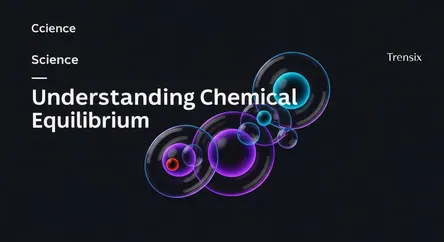Science
Understanding Chemical Equilibrium

An explainer on chemical equilibrium, the state of balance in reversible reactions, and its importance in industrial and biological systems.
What is it?
Chemical equilibrium is the state in a reversible chemical reaction where the rate of the forward reaction equals the rate of the reverse reaction. This means reactants are converting to products at the same pace that products are converting back into reactants. Consequently, the concentrations of both reactants and products remain constant over time. This state is not static but is a "dynamic equilibrium," as reactions continue at the molecular level. It represents a balance where there is no overall change in the quantities of the substances involved.
Why is it trending?
The concept of chemical equilibrium is a cornerstone of chemistry, essential for controlling and optimizing chemical processes. In industrial applications, such as the Haber-Bosch process for ammonia synthesis, understanding equilibrium is critical for maximizing product yield. Le Chatelier's principle, which explains how a system at equilibrium responds to changes in temperature, pressure, or concentration, provides chemists with predictive power. This ability to forecast and manipulate reaction outcomes is vital for efficiency in fields from engineering to environmental science, ensuring its continuous relevance.
How does it affect people?
Chemical equilibrium is fundamental to many processes that affect daily life. It is crucial for maintaining homeostasis in the human body, including regulating blood pH and transporting oxygen via hemoglobin. A common example is a fizzy drink, where the carbon dioxide dissolved in the liquid is in equilibrium with the gas above it. Industrially, equilibrium principles are applied to create countless products, including fertilizers that support global food production and the synthesis of new medicines. Its application is vital in developing efficient and stable manufacturing processes for a wide range of consumer goods.